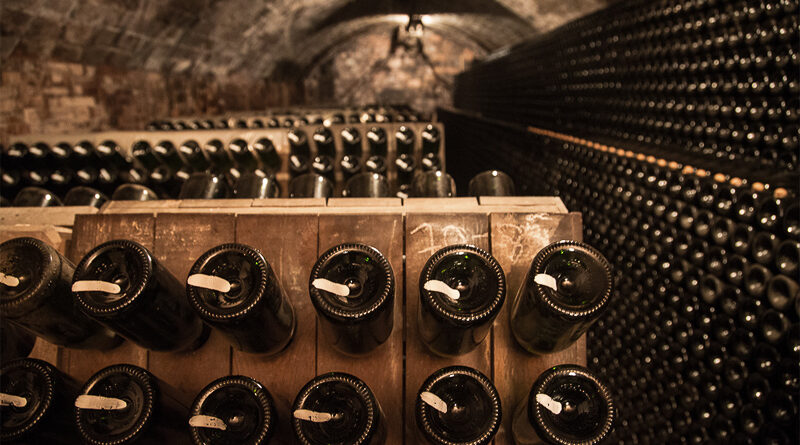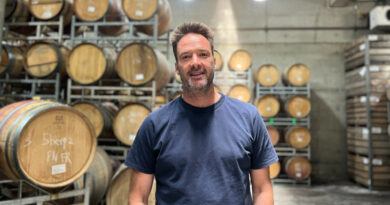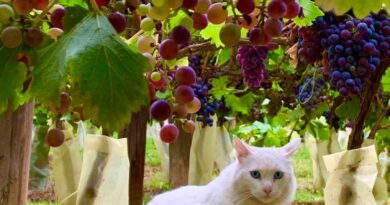Leo Gramona: interviewing the next generation of one of Spain’s leading sparkling wine producers
Gramona, who recently left DO Cava to be founding members of Corpinnat, is one of Spain’s elite sparkling wine houses. Jamie Goode interviews Leo Gramona to discuss their winemaking philosophy, how they have changed their approach in the vineyard, and the history of traditional method sparkling in Spain.
The wine region of Penedès is the epicentre of sparkling wine production in Spain. And one village, Sant Sadurní d’Anoia, is responsible for 90% of the country’s fizz. But Cava is struggling with its reputation because it has become associated with low prices and high volumes – it’s a product that has become divorced from place. There are, however, sparkling wine producers in the region with a quality focus, and one of the leaders is Gramona. I caught up with Leo Gramona, who at age 30 is the next generation of this family firm: Involved in the family business since his twenties, he officially joined it after studying engineering and working in corporate consulting.
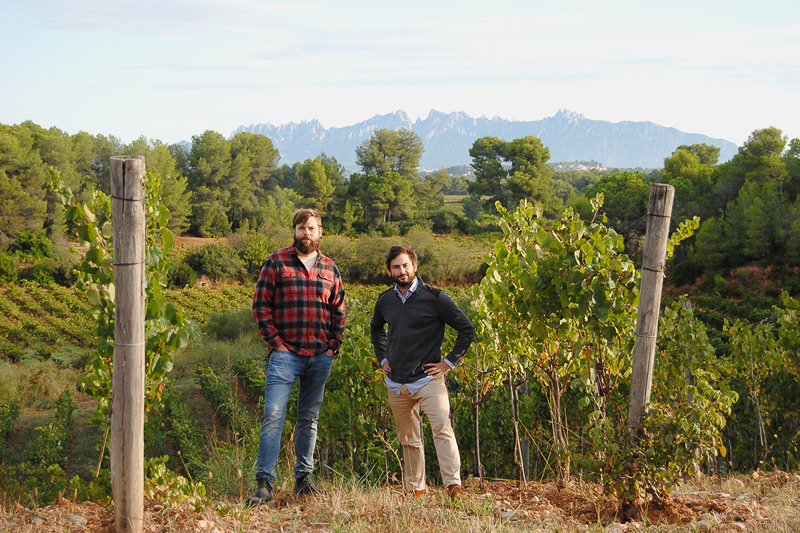
‘Like every family business there are discussions about stepping into my father’s shoes,’ he says. ‘I decided to join, because even though it is a big responsibility, it is also an honour to belong to this fascinating world.’ After broadening his wine focus by studying with the WSET (Wine and Spirit Educational Trust), he’s taken up a role that focuses on the commercial side. This is stepping into his father’s shoes, because his dad, Xavier Gramona is the vice president and is in charge of the business part of the winery. His second uncle, Jaume Gramona (he’s Xavier’s cousin), is the enologist and is in charge of the technical side of the winery. Leo’s cousin Roc is a similar age to him, and although he’s a trained enologist he’s really interested in vineyards. ‘He’s now a director of the Acadèmia de Poda [the first Spanish school of pruning, teaching at relevant wineries such as Alvaro Palacios, Clos Mogador, Comando G, Mas Martinet and Vega Sicilia], and also works in the winery,’ says Leo.
Gramona are best known for their long-aged traditional method fizz. ‘Our entry level starts at 4.5 years on the lees,’ saus Leo. ‘We are specialists in long ageing. For sparkling, in Spain we are the leading specialists.’ He says that the key to lies in the base wines. ‘When we talk about long ageing, it’s also about making a base wine that is able to endure all this time, gain complexity, and still retain freshness.’
Their move to long ageing came from moves they took to preserve their wines during the Spanish civil war. ‘We decided to hide the wine,’ says Leo. ‘We sealed the caves with concrete, and this is why we do long ageing: the wine had evolved and we liked the style.’
Gramona’s history goes back to the middle of the 19th century. Leo’s great-great-grandfather Josep Batlle worked for a rich family in Barcelona. ‘There was a powerful upper class, an aristocracy, and then peasants. The middle class was born in last part of the 19th century with Barcelona.’ Josep’s son Pau made money selling grapes and Celler Batlle was established in 1881. In a rather convenient marriage, Pau’s daughter married Bartolomé Gramona, whose family owned taverns in Barcelona. The united families had both wine and a route to market, and the Gramona brand was established.
‘With phylloxera they earned enough to build the first family cellar,’ says Leo. ‘The reason that this region became famous for sparkling wine was because of the phylloxera bug. All the plants around Europe died but we had the natural barrier of the Pyrenees. So we were some of the sole producers of grapes for sparkling wines in Europe.’
‘Phylloxera took some time to get here. Even if it spread rapidly across France, because of the natural barrier we had a three or four year delay. We had this monopoly of grapes for three or four years. This was really good for our business because the French taught us how to implement their Champenois methods.’
So Cava was born out of others’ misfortunes. ‘Before that there was just ancestral method for sparkling.’ The crisis forced the French to look for new grape sources, and with this they transferred their expertise.
‘In Rioja they had a similar story, but instead they had the French from Bordeaux coming to their region. We had the French from Burgundy and Champagne. When we joined the EU we weren’t allowed to call our product Champagne so we created the name Cava in 1986.’
But Gramona left the DO Cava a couple of years ago, and with nine other producers formed a private appellation called Corpinnat. ‘We are a group of wineries focused on the traditional grapes for our region instead of Chardonnay and Pinot Noir, which despite being grapes with great potential have less tradition in the region. We value not just the autochthonous grapes, but more the way of respecting the land – terroir wines. We didn’t agree with the laws of Cava that will allow you to take some grapes from our region and then some grapes from Extremadura, which is actually further away than Champagne to us, and then blend them. And then there was no control on the production process. And they were focused on price. Every time I went to New York or London and tried to sell my product I’d have to justify why people would have to pay Champagne price if I’m Cava.’
A few years before the Corpinnat breakaway another quality-focused Cava producer, Pepe Raventos, left the DO. ‘He had very similar reasons for leaving Cava, but he moved earlier,’ says Leo. ‘We tried to stay a little bit longer and change things. This lobby is controlled by the big groups, who are controlled by big multinational companies and investment funds. Their strategy is to sell competitively priced sparklings around the world. This will not help us long term.’
‘If what makes you different is low prices, then in 10 years the Chinese will make cheaper sparkling wines. We don’t think that price is the future, but rather we are trying to explain and sell a philosophy, a culture and put it in a bottle. This is what Champagne has done, and it’s what we want to do with our landscapes and culture.’
One other point of difference for Gramona is that for their top sparklings they use cork ageing. ‘We believe it brings complexity to the wine,’ says Leo. For products younger than 6 years we are using crown cap because it is more cost effective and you don’t get that much from benefit from cork if you are not going longer. If you are pushing further than six years, then we are using exclusively cork.’ He says that this cork ageing is a big thing for Gramona. ‘We will be seeing interesting changes in the next years because of the technology of stabilizing cork and avoiding cork taint problems.’
Since the 1970s, traditional method sparkling wines have almost all been aged on their lees under crown cap, which makes the process of disgorgement mechanizable. But crown caps depend on their liners to regulate oxygen transmission, and most of these liners allow quite a bit more than cork does. For this reason some top Champagne producers are returning to the practice of using Champagne corks kept in place with a large metal staple.
Gramona are also different to many of the region’s sparkling wine producers because they don’t focus on Brut Nature, but rather Brut styles. ‘In Spain, we are more focused on the Brut Nature style because we have warmer weather than in Champagne. We are not forced to use sugar to balance the acidity,’ says Leo. ‘People think Brut Nature is better than Brut here in Spain: it is like a brand. At Gramona we are focused on Brut. We have adapted a solera system to make our liquer d’expedition. We are using an Oloroso-like type of wine, which in Catalan we call vi ranci. We have seven different solera systems, and the blend is a family secret. We don’t use much sugar, the most is 6 g/liter so we are Extra Brut, but people don’t understand that: they think it’s sweeter than Brut, so we just use Brut.’
‘Finally, we made a big shift towards organics and biodynamics. Over the last 10-20 years we have built a whole ecosystem that doesn’t need a human hand to maintain it. We tried to reintroduce animals and other plants that had been gone for years. It is not just about the grapes, but also the soil and the ecosystem around it. The healthier soils will nurture the plants in a more sustainable way.’
Jaume Gramona studied in Dijon back in the 1970s. ‘He was the first member of my family to go to university to study wine. He was a hope for our family, and when he came back he started applying all these new methods, like knowing how to make clean, proper wine – something not many houses did in the 1970s in Spain. The wines here were very irregular, and there wasn’t as much experience as in France.’
‘He realized that conventional farming was destroying the land, with the introduction of tractors and the disconnection of the farmer from the land. I think biodynamics – regardless of the more astral components – really implies that you have to be connected to and aware of what is happening in your vineyards, instead of being in a tractor connected with the iPod and the music and the air conditioning, not knowing what is going on.’
‘Biodynamics obliges you to be there and understand. You also suffer more: this year we had a bad year. We lost more than 80% of our grapes because we had a very strong mildew year. It was the perfect storm for us.’
Gramona have also started ploughing by horse again, which is quite fashionable these days. ‘Most people who do this hire a guy who knows how to work with a horse to work specific plots. We tried this for a while but we didn’t have enough consistency to see whether it really worked. My uncle is good friends with Champagne Fleury, and they recommended people who work with horses, and they breed horses. So we bought three horses from them and we now have three people working with us, each with a specific horse.’
‘We use the manure from the horse to make our own compost. All over the world you can choose to make you own biodynamic preparations or buy them. We make our own, and first we have to understand which kind of biodynamics is more beneficial for our soils and environments. It is not the same that you’d apply in Bordeaux at Château Palmer, who are really close to us (in terms of philosophy and practices I would add). Their viticulturist and winemaker came down and we visited them. We share knowledge. We are using sheep and cows, and we use bats to control the population of moths. At the same time we did a pioneer project here with the reintroduction of falcons to control the bird population. It is about creating a trophic chain that will sustain itself, while protecting the grapes.’
Gramona aren’t just about sparkling wines. ‘When my uncle came back from Dijon, at that time we weren’t making still wines, but he reintroduced them. We were still wine producers before phylloxera, and maybe a bit after, but we have specialized exclusively on sparklings. Now the still wines are half our production,’ says Leo.
One of the specialities here is in Xarel.lo, which is the king of local varieties. ‘It is not a very expressive grape, but It has a lot of good properties for long ageing. The longer we want to age a wine for sparkling, the more Xerel.lo we will use. For Gramona this is a rule. It is the most anti-oxidative white grape in the world. It has a lot of resveratrol.’
‘Xarel.lo is a wine with a lot of structure. It is not very expressive, so usually people work it with wood and lees contact to get more complexity. But I think with time it ages beautifully.’
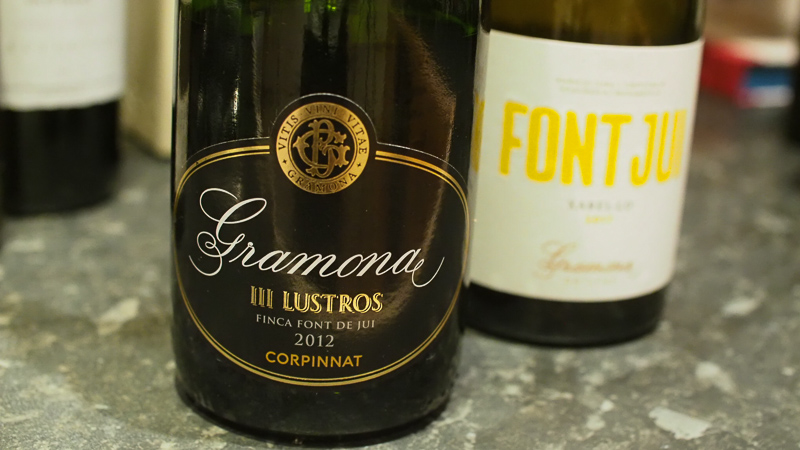
THE WINES
I tasted two wines from Gramona’s range. Their III (Tres) Lustros 2012, a traditional method sparkling that spends 91 months on lees, and a still Xarel.lo, the Font Jui. Both impressed.
Gramona III Lustros Finca Font de Jui 2012 Corpinnat, Spain
12% alcohol. This is a zero dosage (brut nature) traditional method sparkling, disgorged in August 2020 after 91 months on lees. It’s complex, linear and intense with bright lemon and lime fruit and good acidity, with some hazelnut, almond and candle wax complexity. It’s not overtly toasty, but there’s a subtle bready richness alongside the citrus intensity. Astonishing precision, and a laser-like finish. This tastes of Penedes: it’s not trying to be Champagne, and it’s quite wonderful. 94/100
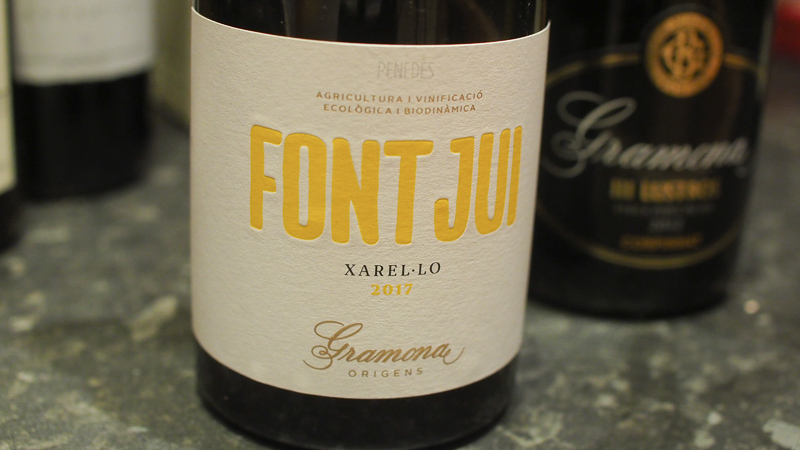
Gramona Font Jui Xarel.lo 2017 Penedes, Spain
12% alcohol. Gramona are known as a sparkling wine house, but half their production is still. This is a Xarel.lo that’s whole bunch pressed. Free run juice only is used. Barrel-fermented in French oak (300 litres, one-third new). This is such a lovely precise wine. There’s keen lemony acidity, but also some texture. There’s a finesse and delicacy here, with crystalline citrus fruits and some notes of mandarin and grapefruit. There’s no obvious oak here, and it tastes light and pure, but with some substance. Xarel.lo is such an interesting variety. 93/100

